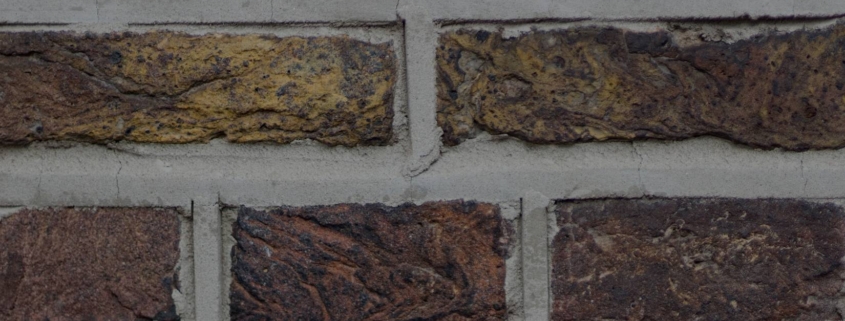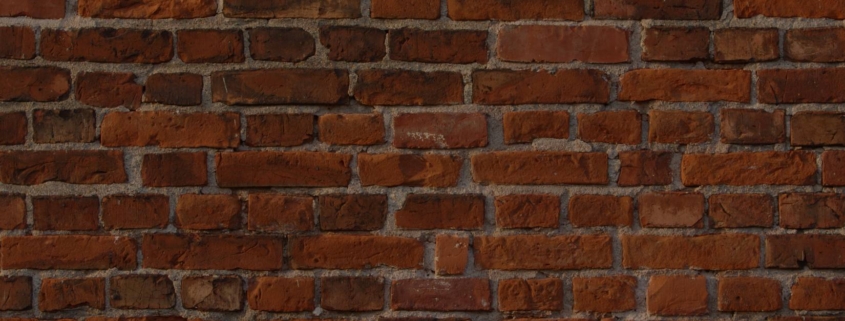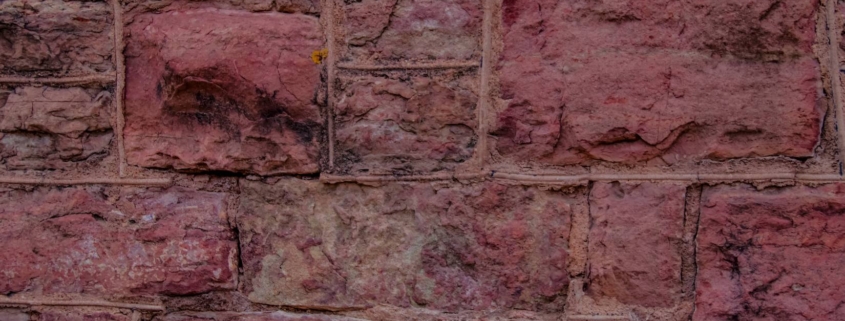Brick restoration is more than just fixing walls; it’s about preserving the character and history of your property. In Richmond Hill, where many homes showcase stunning brickwork, maintaining these structures is crucial for both aesthetic appeal and structural integrity. Techniques like repointing and replacing damaged bricks can breathe new life into your home, ensuring it stands strong against the elements.
Investing in brick restoration not only enhances your property’s value but also helps maintain the charm that defines Richmond Hill’s architectural landscape. By addressing issues early on, you can prevent costly repairs down the line while keeping your home looking its best. Whether you’re dealing with crumbling mortar or cracked bricks, taking steps to restore your brickwork is essential for preserving your home’s unique appeal.
Overview of Brick Restoration
Brick restoration involves various techniques aimed at preserving and maintaining brick structures, ensuring their longevity and historical value. Repointing is a crucial method in this process. It consists of removing deteriorated mortar and replacing it with fresh material, enhancing both the aesthetic appeal and the structural integrity of the brickwork. This technique not only strengthens the overall foundation but also prevents water ingress, which can lead to further damage.
Investing in brick restoration enhances property value, especially in areas with rich architectural heritage like Richmond Hill. Historical properties benefit significantly from restoration efforts, as these practices help retain their charm and uniqueness. Many potential buyers prioritize homes that maintain their original character, making brick restoration a worthwhile investment.
Businesses should recognize the importance of addressing brickwork issues early. Allowing damage to progress can lead to costly repairs or even structural failure. By prioritizing brick restoration, you secure the longevity of your property and uphold its historical significance. This proactive approach fosters community pride and enhances the neighborhood’s overall aesthetic, attracting attention from not only potential buyers but also visitors intrigued by the area’s architecture.
Brick restoration also contributes to sustainability efforts. Preserving existing materials reduces waste compared to new construction, making it an environmentally friendly choice. Utilizing skilled artisans who understand historical techniques further ensures that restoration maintains authenticity.
Overall, brick restoration serves as a vital practice for preserving the historical value of properties in Richmond Hill. By implementing techniques like repointing and addressing issues promptly, you can protect both your investment and the architectural heritage of the community.
Importance of Brick Restoration in Richmond Hill
Brick restoration plays a critical role in maintaining the charm and historical value of properties in Richmond Hill. Engaging in proper restoration techniques ensures that your brick structures remain resilient and visually appealing.
Aesthetic Appeal
A well-executed brick restoration enhances the visual attractiveness of your property, contributing to the overall character of Richmond Hill. Techniques like repointing restore the original look of worn brickwork. By addressing fading colors or crumbling mortar, you can significantly uplift the façade of your building, attracting potential buyers or tenants. Maintaining aesthetic appeal through brick restoration also reflects positively on the community, preserving its unique architectural heritage.
Structural Integrity
Ensuring structural integrity through brick restoration prevents long-term damage to your building. Early intervention, such as repointing, effectively seals gaps and prevents moisture intrusion. Untreated issues often lead to more severe structural problems, increasing repair costs. Businesses that prioritize these restoration efforts benefit from reduced risks, extending the lifespan of their properties. Upholding structural integrity is essential for the safety of occupants and the long-term investment value of your property in Richmond Hill.
Common Brick Restoration Services
Brick restoration services play a vital role in maintaining the historical value and structural integrity of properties in Richmond Hill.
Cleaning and Repair
Cleaning and repair are fundamental in brick restoration. Professionals use specialized cleaning techniques to remove dirt, algae, and stains, revitalizing the brick’s appearance. Repairing damaged bricks ensures the overall stability of the structure. By addressing these issues promptly, you prevent further deterioration, maintaining your property’s aesthetic appeal and value.
Repointing Techniques
Repointing techniques are essential for preserving the integrity of brickwork. This process involves removing deteriorated mortar and replacing it with new, compatible material. Effective repointing enhances the durability of the bricks while also improving the visual cohesion of the structure. Ensuring proper repointing techniques safeguards against moisture infiltration, which can further compromise the historical value of your property.
Front Façade Restoration
Front façade restoration focuses on reviving the exterior appearance of your building. This service includes comprehensive assessments of brick conditions, mortar joints, and decorative elements. Experienced restorers employ materials that blend seamlessly with existing elements, enhancing visual appeal while protecting structural integrity. Maintaining the front façade showcases your commitment to preserving the architectural character of Richmond Hill, attracting positive attention and potential customers.
Challenges in Brick Restoration
Brick restoration in Richmond Hill involves critical challenges that can impact historical value and structural integrity. Awareness of these challenges helps you understand the importance of professional assistance.
Weathering Effects
Weathering causes significant deterioration of brick structures. Rain, wind, and temperature fluctuations lead to cracks and erosion over time. These issues compromise structural integrity and decrease aesthetic appeal. For optimal restoration, combining techniques like cleaning and repointing addresses weathering effects effectively. Regular assessment ensures that your brickwork maintains reliability and beauty.
Historical Considerations
Restoring historic properties demands a deep understanding of architectural significance. Using appropriate materials and techniques sustains the historical value of brick structures. Preservation practices must adhere to local guidelines to protect heritage and cultural importance. Engaging experienced professionals ensures that restoration respects original craftsmanship while enhancing durability. This commitment underlines the necessity of expert intervention in brick restoration efforts.
Choosing a Brick Restoration Specialist
Selecting the right brick restoration specialist is vital for preserving the historical value and structural integrity of your property. Ensuring that you make informed choices can significantly impact the longevity of your brickwork.
Experience and Expertise
Experience in brick restoration is crucial. Look for specialists with a proven track record in techniques like repointing, cleaning, and repair. Verify their past projects to assess their craftsmanship and adherence to best practices. Specialists familiar with the particular challenges of older brick structures help prevent future issues, maintain architectural significance, and enhance the aesthetic appeal of your building.
Licensing and Insurance
Check that any brick restoration specialist carries the necessary licensing and insurance. Licensing confirms that they meet local regulations and standards in Richmond Hill. Insurance not only protects you from potential liabilities but also ensures that the specialists are qualified to undertake restoration projects. This coverage is especially important in dealing with historical properties, where proper execution and adherence to safety regulations play key roles in the restoration process.
Conclusion
Brick restoration plays a crucial role in maintaining the historical value and integrity of structures in Richmond Hill. Engaging in effective repointing and brick cleaning not only enhances the visual appeal of your property but also extends its lifespan. Addressing the effects of weathering through professional restoration techniques prevents further damage and ensures structural stability.
Understanding the importance of historical value means recognizing that improper restoration can diminish the character of heritage buildings. Preserving original craftsmanship requires skilled professionals familiar with the specific needs of older brick structures. Choosing a specialist with the right experience and knowledge is vital for maintaining the architectural significance that defines Richmond Hill’s character.
Ultimately, investing in brick restoration is an investment in the longevity and beauty of your property. Prioritizing high-quality techniques safeguards your investment and upholds the community’s historical narrative.
Key Takeaways
- Preservation of History: Brick restoration is essential in maintaining the cultural and architectural heritage of Richmond Hill, ensuring that homes retain their unique character.
- Techniques Matters: Key restoration techniques such as repointing, brick cleaning, and façade restoration enhance both the aesthetic appeal and structural integrity of brick properties.
- Early Intervention: Promptly addressing brickwork issues prevents costly repairs in the future, safeguarding your investment and ensuring long-term stability of your home.
- Value Enhancement: Investing in brick restoration significantly increases property value, especially in historical areas where original character is prized by buyers.
- Professional Assistance: Choosing qualified brick restoration specialists is critical; their expertise ensures adherence to best practices and preservation of historical significance.
- Sustainability Benefits: Restoration is an environmentally friendly option, as it reduces waste and leverages existing materials, contributing to sustainability efforts in construction.
Frequently Asked Questions
Why is brick restoration important in Richmond Hill?
Brick restoration is crucial in Richmond Hill for preserving the historical value and structural integrity of buildings. It helps maintain the architectural significance of historic properties and enhances their aesthetic appeal while preventing deterioration due to weathering.
What techniques are used in brick restoration?
Common techniques include repointing to fix mortar joints, cleaning to remove dirt and grime, and repairing damaged bricks. These methods enhance the longevity and visual appeal of brick structures, ensuring they retain their historic character.
How do I choose a brick restoration specialist?
When selecting a brick restoration specialist, consider their experience with older brick structures, expertise, licensing, and insurance. An experienced professional will understand the intricacies of preserving architectural significance and craftsmanship, ensuring quality restoration work.
What are the challenges of restoring historic brick buildings?
Restoring historic brick buildings can be challenging due to factors like weathering effects, the need for specialized techniques, and adherence to local guidelines. Understanding the architectural significance allows for accurate restoration without compromising the building’s character.
Can improper restoration damage historic buildings?
Yes, improper restoration can diminish the character and integrity of heritage buildings. Using unsuitable materials or methods can lead to further deterioration and loss of historical value, making expert restoration essential for protection and preservation.




